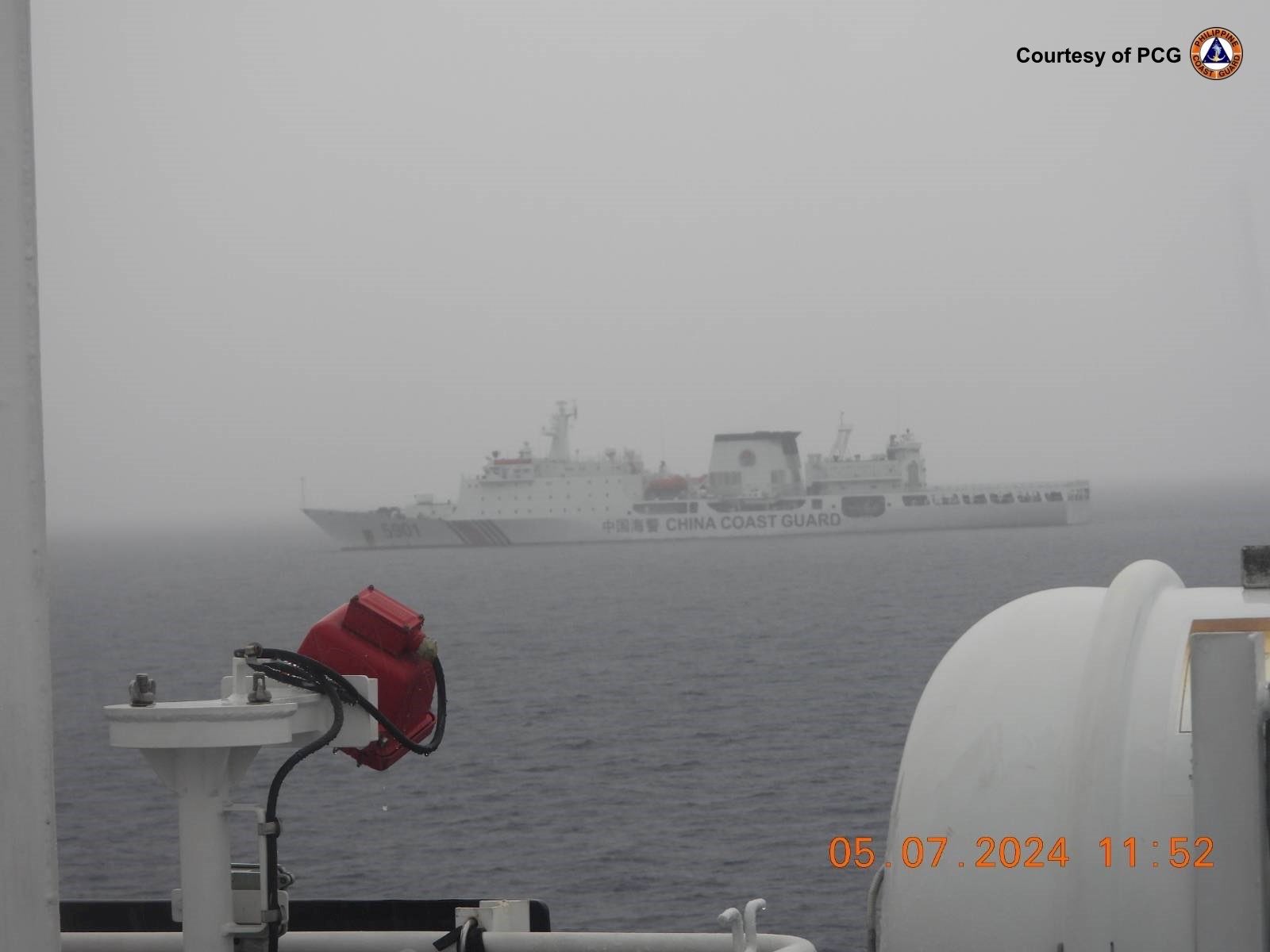In a move considered "intimidation" by Philippine officials, China has anchored its enormous coast guard vessels within the Philippines' exclusive economic zone (EEZ), heightening tensions in the South China Sea. On July 3, the China Coast Guard vessel CCG-5901 anchored near Sabina Shoal in the Spratly Islands, about 130 kilometers northwest of the Philippine island of Palawan. This vessel remained in place as of July 6.
The Philippine Coast Guard quickly warned the Chinese vessel and questioned its intentions. Jay Tarriela, the spokesperson for the Philippine Coast Guard, emphasized that the Philippines would not back down from its territorial claims in the South China Sea. “It’s an intimidation on the part of the China Coast Guard,” Tarriela stated. “We’re not going to pull out, and we’re not going to be intimidated.”
China’s Ministry of Foreign Affairs, during a regular press briefing, denied the Philippines' claim that the area was within its EEZ. Spokesperson Lin Jian stated, “China’s military and police ships patrolling and enforcing the law in the waters near Xianbin Jiao comply with China’s domestic law and international law,” using the Chinese name for the Sabina Shoal.
China asserts "indisputable sovereignty" over almost the entire South China Sea, leading to overlapping claims with several countries, including the Philippines. Despite a 2016 ruling by an international tribunal in The Hague favoring the Philippines and rejecting China's broad claims, Beijing continues to enforce its territorial ambitions through its coast guard and militia boats.
Over the past year, China Coast Guard ships, often supported by militia boats, have been involved in numerous incidents, resulting in damage to Philippine vessels and injuries to Filipino sailors. The CCG-5901, with its significant size and firepower, frequently leads China's efforts to assert control. Last year, this vessel was deployed near Vanguard Bank, a contentious area between Vietnam and China, highlighting its role in regional power dynamics.
China's coast guard vessels, dubbed "The Monster," are the largest of their kind globally. At 541 feet in length and displacing 12,000 tons, these vessels dwarf most other coast guard ships, including those of the United States. Their impressive size and capabilities make them pivotal in China's strategy of intimidation and control over disputed waters.
The BRP Teresa Magbanua, the largest and most advanced vessel in the Philippine Coast Guard, has been stationed at Sabina Shoal since April to counter the presence of Chinese maritime militias. Measuring 97 meters, it is considerably smaller than the Chinese CCG-5901 but remains a crucial asset for the Philippines. Despite its size, the Teresa Magbanua will continue to patrol and ensure the security of Philippine waters.
Philippine Coast Guard officials have stated that while the Teresa Magbanua is vital to their operations, it is not meant to be a permanent outpost but rather a patrol vessel safeguarding Philippine sovereignty. This stance reflects the broader regional tensions and the ongoing struggle for control and influence in the South China Sea.

:quality(70)/cloudfront-us-east-1.images.arcpublishing.com/archetype/7HGY5NE5X5BODIRG4TY4CY6DCA.jpg)
:quality(70)/cloudfront-us-east-1.images.arcpublishing.com/archetype/W3UFL22J6NEIPPRVBYINTAGPQQ.jpg)




:quality(70)/cloudfront-us-east-1.images.arcpublishing.com/archetype/UXGSWPEZJVC6FPJXGDXG7QVOWU.jpg)